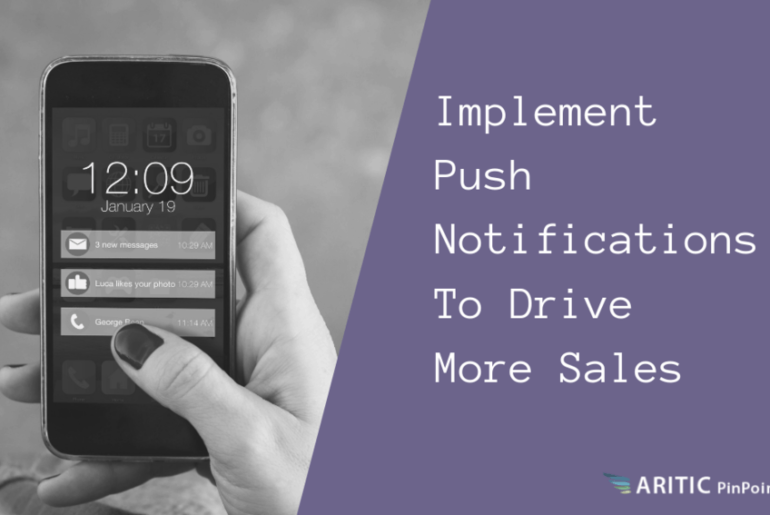For a company, the go-to-market (GTM) strategy is one of the main levers for improving its key business results.
Jump Directly to
1 . What is a Go-To-Market Strategy?
2. Why you need a Go-To-Market Strategy?
3. 4 Challenges CEOs must know to create a successful Go-to-market strategy
4. How to go about developing a Go-to-market execution strategy?
Like any scheme or plan, before you can put it together, you must do a little homework and pre-analyze certain possibilities. A lot of detail should be covered in the go-to-market execution approach in a comprehensive, short and concise manner.
It is essential to have a firm sense of what you are doing before you start taking up page after page of your strategy.
Still Not an User of Aritic PinPoint Automation?
Exactly what we will be discussing all about in this article!
What is a Go-To-Market Strategy?
A go-to-market approach is a roadmap that outlines how a company can interact with customers in order to address customer pain points with the right sales and marketing process to ensure the optimal growth of the company.
A go-to-market execution strategy involves pricing, distribution, buyer journeys, new product rollouts, rebranding of products, and channel utilization strategies.
A GTM approach, at its heart, is a customer-first strategy that entails how a business aligns to the ever-evolving demands and expectations of its customers – it is the junction by which the company sells, engages, and communicates with new prospects.
Why you need a Go-To-Market Strategy?
Let’s see it critically, why do you actually want to put together a go-to-market execution strategy?
When you have an idea for which you really are enthusiastic and passionate, it may seem obvious to anticipate success as a guarantee. This excitement and belief may converge to situations such as overlooking practicalities that may cut legs off from the most inventive undertakings when they are unmarked or just partially discussed.
Using the go-to-market execution approach, you can monitor the facts, keep reality check intact, and incorporate even minute drivers that continue to be essential to the progress and give you the base to cope with the unforeseen circumstances.
There are a number of purposes to use a go-to-market execution plan. First, it clarifies why you are launching your product or service and how you can take up the never-facilitating task of keeping customers involved and build loyalty.
Secondly, it forces you to worry about all your customers’ challenges as the product or service gets introduced. Thus, it helps ensure that you can provide them with the best possible experience and gain confidence. Your plan means that you don’t screw up all the hard work that you will put in as you progress, further strengthening your offering.
Crucially, a robust, systematic go-to-market execution plan also gives you a roadmap for tracking your progress and helps you identify and diagnose any problems that hinder your growth before you can start your venture well on the grounds of the market.
4 Challenges CEOs must know to create a successful Go-to-market strategy
As CEO, you know that several variables need to come together to build an efficient go-to-market execution plan for marketing your business. Therefore, your blueprint should spell the teams across all functions, including considerations of marketing, sales, and customer experience support.
And it would be best if your customers and the marketplace are equally reflected in your blueprint.
Although you might know this, it’s not a cakewalk to develop a successful go-to-market strategy because every company has specific challenges and varying holds in the market.
However, if you and your staff can resolve the following four challenges, you will have the strength of a perfect go-to-market approach that will help your business grow steadily.
Challenge 1: Ideal Buyer Profile Alignment
Your entire plan for go-to-marketing execution depends on this essential element: ideal buyer profile alignment.
Execute Effective Marketing Automation Workflows Now
You may have a certain number of buyers for your product or service, but it all depends on if you find and align ideal buyer profiles to understand who your buyers are; otherwise, you’re likely going to see that demand is missing and growth is negligible.
When you fine-tune your segmentation approach, understand and document each buyer’s pain points, and leverage insights from your data to identify and target each relevant audience effectively. Only then can you define and align ideal buyer profiles, partner business and formulate unique selling propositions.
Challenge 2: Distribution Plan
You can’t market a product if it doesn’t hit your target customers. Your distribution plan should include location-based techniques or approaches for selling your products.
Develop a distribution plan for your go-to-marketing execution pathway that would determine the best distribution methods that make it possible to firmly position your product or service into the market and ultimately into the hands of consumers.
And it is the right to go with asking these questions as well:
- What kinds of distributing channels and sources can you use for maximum reach?
- How will selling through those channels affect your brand, sales volumes, costs, and profit margins?
- How will your sales process function in conjunction with go-to-marketing goals?
- How well aligned are your sales and marketing departments?
Challenge 3: Value Proposition
Value proposition — often called a unique selling proposition — is what you promise to deliver to your customers.
It is vital to find and define your value proposition from the perspective of your ideal buyers; begin by evaluating the top benefits of your product or service. If you’ve recognized the different benefits of your offering, consider the potential options that those benefits provide your target consumers.
When describing your value proposition, keep the goal of thinking from the viewpoint of ideal buyers well intact. Consider what issues or challenges customers may seek from your product.
After you’ve done so, you’ll be able to predict how consumers can use the product to suit their needs, and you’ll be able to tailor your marketing campaigns appropriately.
Challenge 4: Accountability
As you might have noted, the go-to-marketing execution approach entails initiatives and inputs from various departments throughout the process. R&D can be responsible for concept creation and screening, Finance for budgeting, Engineering for product development, and Marketing for consumer research.
Any successful product launch is just managed like a project— thus, Accountability holds a crucial part in a go-to-marketing execution strategy. Specific team members are responsible for organizing it into actionable and targeted teams, identifying workflows, and delegating responsibility for various activities involved from start to finish.
Without Accountability, your go-to-market execution strategy could fail. You may have the best go-to-market approach in the world. But, without Accountability playing a role, your ideal buyer profile alignment, your distribution plan, and your value proposition might attract fallout.
How to go about developing a Go-to-Market execution strategy?
Each of the phases below will help you understand how to improve your understanding of your niche, target market, and market suitability and improve the predictions made well at the beginning of any go-to-market execution strategy.
Phase 1: Research and Planning
Without question, one of the biggest pluses of a go-to-market execution approach is the ability to decide whether or not your venture is viable and something that can pique the interest of your target market enough to support demand.
Although it can be challenging to consider a no, a go-to-market execution approach based on sincerity, realism, and modesty can sometimes save you a lot of time, effort, and resources by stopping development until you throw your heart and soul into a project to prevent it from getting failed, and ultimately rethink your strategy.
By doing this, you will be able to go on with increased optimism, a greater view of the big picture to focus your actions on, and a more solid course of action to bring to customers and get them interested.
For determining which course you should begin planning your project, ask the questions given below:
- What problems will your offer solve for customers?
- How will you validate their need for that specific solution?
Phase 2: Develop a Product Roadmap
While research and planning are a base to developing your go-to-market strategy execution, it is only as good as how you implement it. You must realize how time to market is critical and should know the value of good team coordination and proper cross-team collaboration.
It is crucial to have a product roadmap that will highlight the progression of your product, product extensions, and the entry into new markets after you have recognized the company’s needs.
Your product roadmap can actually work as a great communication widget assisting you in identifying problems and ambiguity, if any, which can arise as a result of any missing tasks to downstream effects on cross-team behavior.
You will use it to clarify typical roles and significant goals for cross-functional teams. The roadmap keeps everything on track and makes a note of all commitments to the launch.
Phase 3: Develop your marketing strategy
Now in this phase of your go-to-market execution strategy, it’s time to start creating a solid marketing plan for every target market you have discovered.
You’ll need to direct your efforts to focus on the target audience and build such a communication strategy that effectively highlights your value proposition. From here, you can easily augment your unique marketing plan by developing your social media marketing, paid campaigns, and SEO strategies, and content marketing efforts.
All of this marketing mix will ascertain how well you reach the market and ultimately develop a brand position to entice your visible prospects.
To develop a unique marketing plan, consider:
- How will you reach ideal buyers and influencers?
- What kind of communication or interactions will move them to consideration and purchase?
Phase 4: Strong Customer Experience
In this phase, your go-to-market execution strategy should lay out clear measures and approaches to integrate customer experience as a continuous focal point.
Nowadays, many companies realize the importance of offering after-sales support to maintain consumers’ loyalty following sales and consumer success for building an effective go-to-market execution strategy. It is an imperative strategy to create and foster relationships with customers to attract and retain them as repeat customers.
So, what is a strong customer experience?
A strong customer experience strategy involves showing up for your customers when they need you to, with consistent support and after-sales interactions. And it’s on your part to align customer success support teams to ensure that your customer’s contact with your brand is meaningful and positive. In other words, here, it should be relativistic, not transactional.
Think of customer experience as an essential lever in establishing a feedback loop system for you. This feedback loop is necessary to understand and cater to the customer’s needs, hence providing satisfying answers and support. Having customer satisfaction as your goal will build the brand recognition and authority that you seek.
The Takeaway
All in all, you need to keep in mind that no matter how well defined your go-to-market execution strategy is, one thing is universal: The more relevant your messaging and communications are, the better it will resonate with the target market audience.



